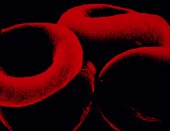California-based researchers find medications for childhood hemophilia take up large share of budget
MONDAY, Aug. 3, 2015 (HealthDay News) — Treatment costs for one childhood illness, hemophilia, appear to use up a large portion of a state’s Medicaid budget, according to a study published in the July 28 issue of the Journal of the American Medical Association.
Sonja Swenson, of Stanford University in California, and colleagues tracked 2010 to 2012 data from 34,330 publicly insured children and young adults under the age of 21 in California with serious chronic health conditions. Overall, outpatient pharmacy costs totaled almost $476 million, or 20 percent of total health care costs. Costs per child for the study period varied widely: From just 16 cents for one patient to nearly $57 million for drugs for another, unnamed patient. Hemophilia treatment accounted for 41.9 percent of outpatient drug costs.
Antihemophilic factor accounted for 98 percent of spending on children with hemophilia, or 40.9 percent of total pharmacy spending. The average per-child cost for antihemophilic factor was about $1.3 million over the time span covered by the study. The next largest percentage of spending was 9.2 percent for central nervous system agents, with an average amount of $1,869 per child, the researchers reported.
Swenson’s group believes that “antihemophilic factor is highly efficacious and essential in caring for children with hemophilia, putting pressure on public programs” to figure out ways to bring costs down.
Full Text (subscription or payment may be required)
Copyright © 2015 HealthDay. All rights reserved.








